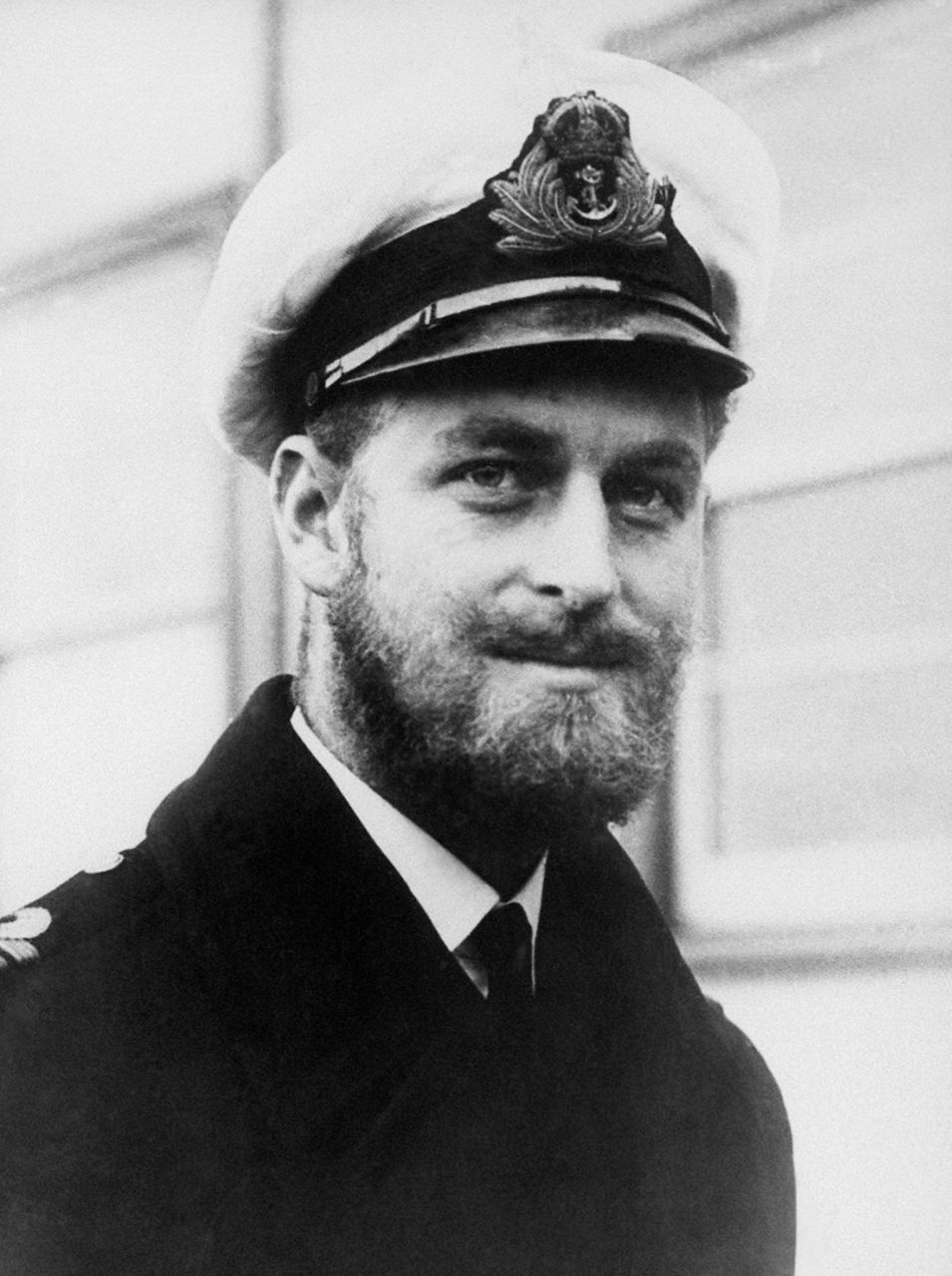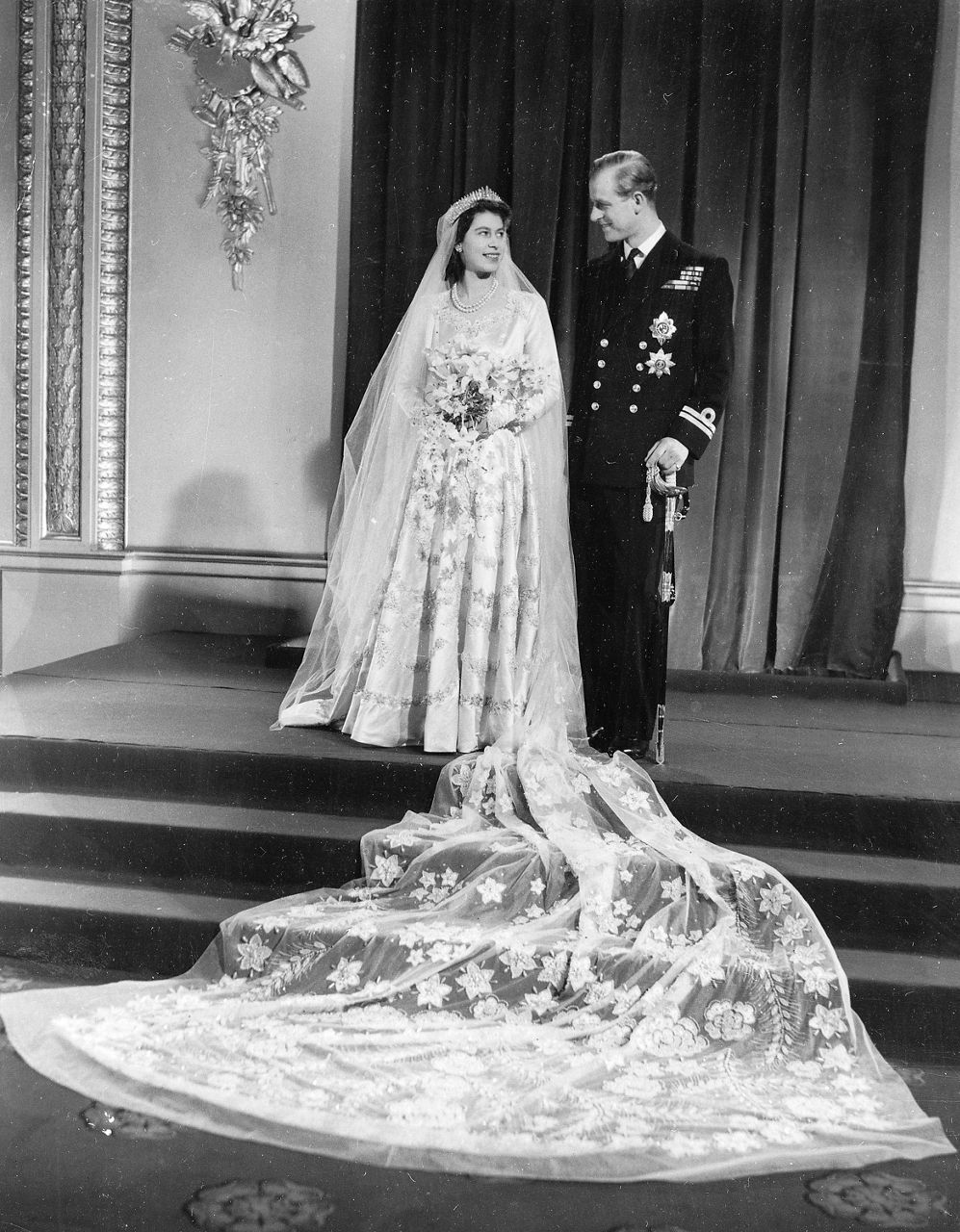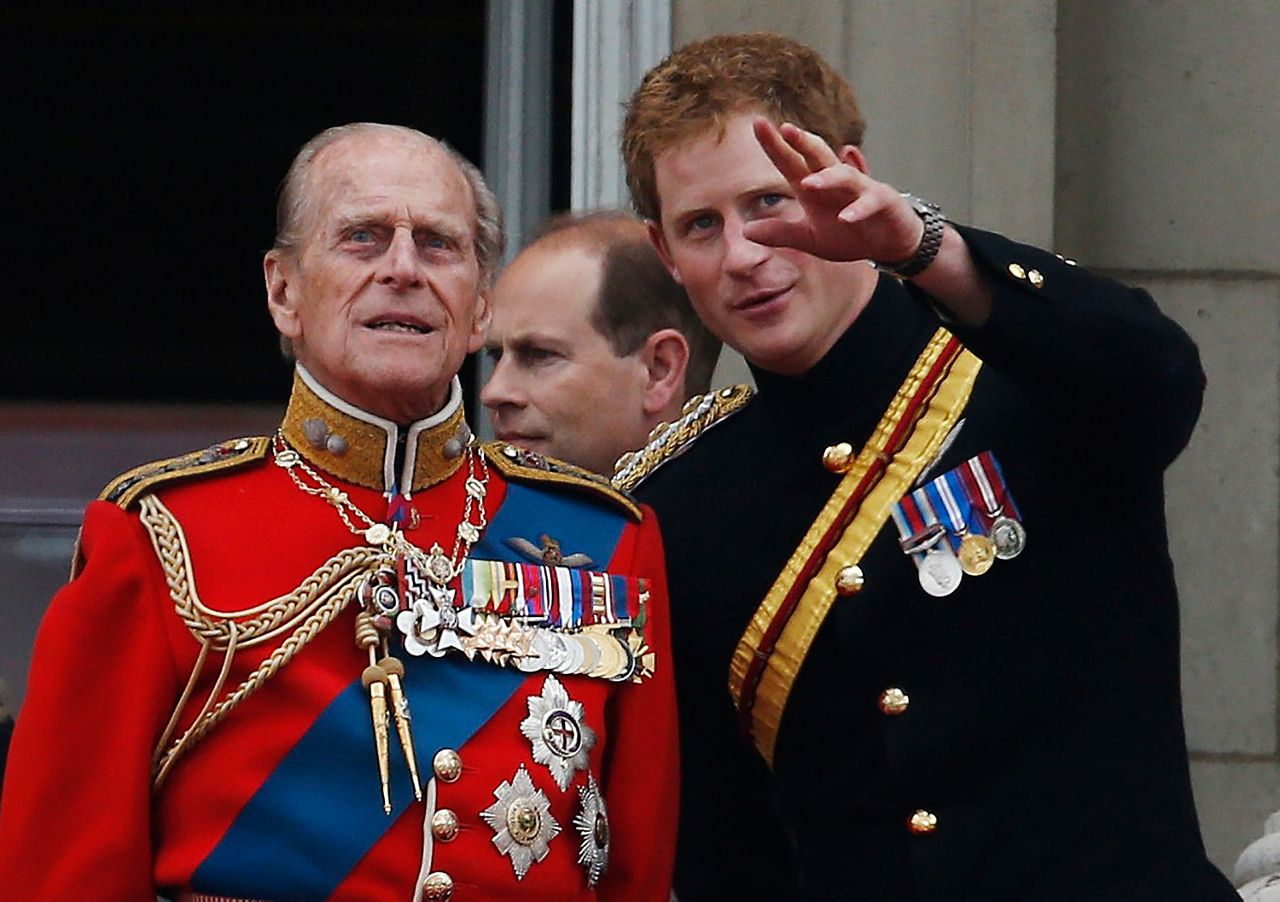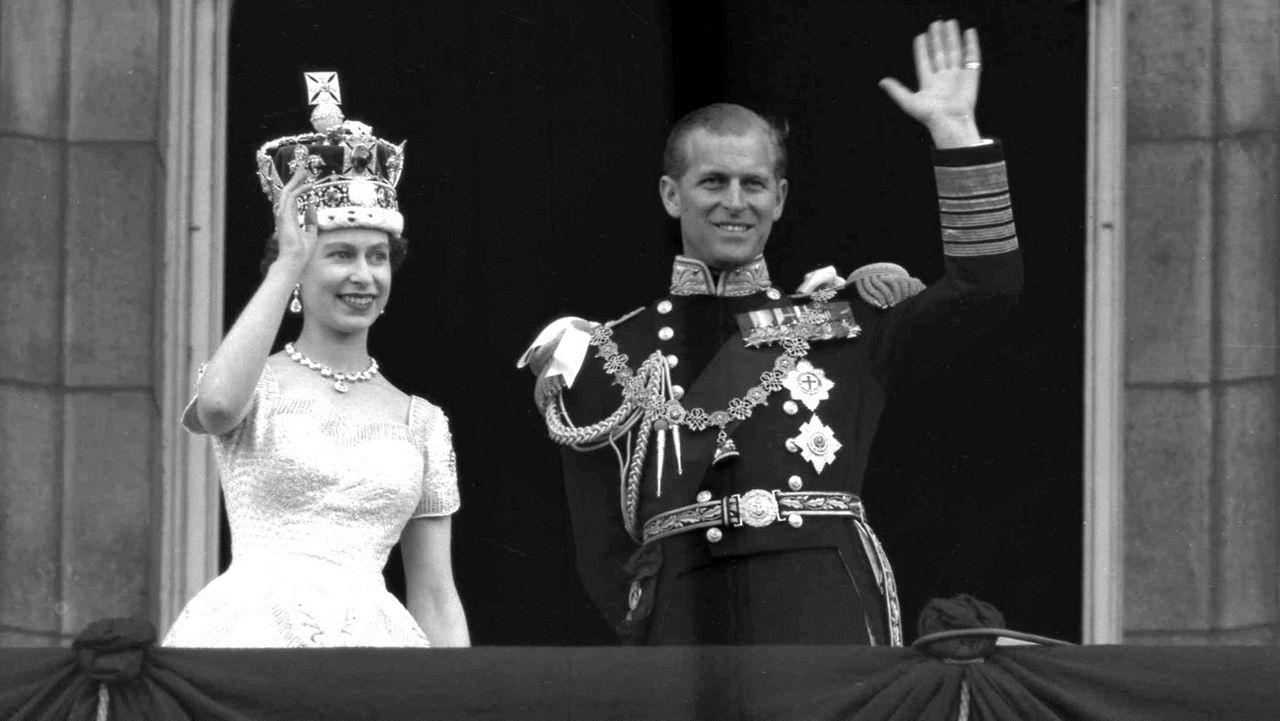Prince Philip, Duke of Edinburgh, the patriarch of the British Royal Family and husband of Queen Elizabeth II for over 73 years, has passed away at the age of 99, Buckingham Palace confirmed Friday.
"It is with deep sorrow that Her Majesty The Queen has announced the death of her beloved husband, His Royal Highness The Prince Philip, Duke of Edinburgh," Buckingham Palace wrote on Twitter. "His Royal Highness passed away peacefully this morning at Windsor Castle."
Prince Philip was the longest-serving consort of a reigning monarch in British history and was the oldest ever male member of the British Royal Family.
United Kingdom Prime Minister Boris Johnson hailed Prince Philip for his "extraordinary life" and "decades of selfless service to the country."
"Our thoughts are with Her Majesty and her family, who have lost not just a much-loved and highly respected public figure, but a devoted husband and a proud and loving father, grandfather, and great-grandfather," Johnson wrote.
Scottish First Minister Nicola Sturgeon also expressed her deepest condolences, highlighting the Duke of Edinburgh's longstanding ties to Scotland.
“From his patronage of The Duke of Edinburgh’s Award Scheme, to his close association with the University of Edinburgh as Chancellor for over fifty years and his commitments to countless charities and organisations, Prince Philip’s long contribution to public life in Scotland will leave a profound mark on its people," she said in a statement.
President Joe Biden and First Lady Dr. Jill Biden expressed their "deepest condolences to Her Majesty Queen Elizabeth II, the entire Royal Family, and all the people of the United Kingdom" on the loss of Prince Philip.
"Over the course of his 99-year life, he saw our world change dramatically and repeatedly," the president wrote in a statement. "From his service during World War II, to his 73 years alongside the Queen, and his entire life in the public eye — Prince Philip gladly dedicated himself to the people of the UK, the Commonwealth, and to his family."
"The impact of his decades of devoted public service is evident in the worthy causes he lifted up as patron, in the environmental efforts he championed, in the members of the Armed Forces that he supported, in the young people he inspired, and so much more," Biden added. "His legacy will live on not only through his family, but in all the charitable endeavors he shaped."

Born in Greece into the Greek and Danish royal families, Prince Philip of Greece and Denmark was the fifth son of Prince Andrew of Greece and Denmark and Princess Alice of Battenberg, a great-granddaughter of Queen Victoria.
After his family’s exile from Greece when he was an infant in Dec. 1922 following the Greco-Turkish War – his father, an army commander, was tried after a devastating military defeat by the Turks and agreed to leave Greece rather than face a death sentence – Prince Philip’s family moved to France, growing up in a house owned by Philip’s aunt, Princess George of Greece and Denmark, in the Parisian suburb of Saint-Cloud.
Philip went to school in Britain and entered Britannia Royal Naval College Dartmouth as a cadet in 1939. He got his first posting in 1940 but was not allowed near the main war zone because he was a foreign prince of a neutral nation. When the Italian invasion of Greece ended that neutrality, he joined the war, serving on battleships in the Indian Ocean, the Mediterranean and the Pacific.
Prince Philip was educated in France, Germany, and Scotland, before serving in the British Royal Navy, where he served in World War II and rose to the rank of lieutenant — though he eventually was given the title of five-star Admiral of the Fleet, the highest available rank in the Royal Navy, upon Queen Elizabeth II’s ascension to the throne in 1953.
Philip first met Elizabeth in 1934, though they began exchanging letters after a meeting in 1939, when Elizabeth was 13 years old. They were secretly engaged in 1946, after Philip asked her father, King George VI, for her hand in marriage, and they announced their engagement in 1947.

Philip renounced his Greek and Danish titles prior to the marriage and officially converted from Greek Orthodoxy to Anglicanism following some controversy about his foreign birth, lack of financial standing, and had sisters who married Germans with Nazi ties. Before the wedding, King George gave him the royal title of the Duke of Edinburgh
They were married on Nov. 20, 1947, at Westminster Abbey, the same church where two of their children — Princess Anne and Prince Andrew — and one of their grandchildren, Prince William, would later marry. The ceremony was broadcast to over 200 million people worldwide.
The couple had their first two children — Prince Charles in 1948 and Princess Anne in 1950 — prior to Elizabeth’s ascension to the throne in 1952. Philip was the one who broke the news to Elizabeth of her father’s death on Feb. 6, 1952, less than two weeks before the birth of their third child, Prince Andrew.
Philip stood by Elizabeth’s side as she ascended the throne, and remained there until his death. The queen pronounced that Philip would have “Place, Pre-eminence, and Precedence next to Her Majesty on all occasions and in all meetings, except where otherwise provided by Act of Parliament,” meaning that her son, Prince Charles, would never outrank his father during her reign.
The queen, a very private person not given to extravagant displays of affection, once called him “her rock” in public.
In private, Philip called his wife Lilibet; but he referred to her in conversation with others as “The Queen.”
Philip’s position was a challenging one — there is no official role for the husband of a sovereign queen — and his life was marked by extraordinary contradictions between his public and private duties. He always walked three paces behind his wife in public, in a show of deference to the monarch, but he was the head of the family in private. Still, his son Charles, as heir to the throne, had a larger income, as well as access to the high-level government papers Philip was not permitted to see.
Philip often took a wry approach to his unusual place at the royal table.
“Constitutionally, I don’t exist,” said Philip, who in 2009 became the longest-serving consort in British history, surpassing Queen Charlotte, who married King George III in the 18th century.
He frequently struggled to find his place — a friction that would later be echoed in his grandson Prince Harry’s decision to give up royal duties.
“There was no precedent,” he said in a rare interview with the BBC to mark his 90th birthday. “If I asked somebody, ‘What do you expect me to do?’ they all looked blank.”
Philip was the patron for over 800 charities, and accompanied Queen Elizabeth all over the world.

In 2017, at the age of 96, Philip retired from royal duties, having taken part in 22,219 solo engagements through the years. Since 1952, he wrote over 14 books, traveled to more than 76 countries, delivered nearly 5,500 speeches, and made over 600 solo overseas visits, according to the palace.
Philip’s final years were clouded by controversy and fissures in the royal family.
His third child, Prince Andrew, was embroiled in scandal over his friendship with Jeffrey Epstein, an American financier who died in a New York prison in 2019 while awaiting trial on sex trafficking charges.
U.S. authorities accused Andrew of rebuffing their request to interview him as a witness, and Andrew faced accusations from a woman who said that she had several sexual encounters with the prince at Epstein’s behest. He denied the claim but withdrew from public royal duties amid the scandal.
At the start of 2020, Philip’s grandson Harry and his wife, Meghan Markle, announced they were quitting royal duties and moving to North America to escape intense media scrutiny that they found unbearable.
Philip enjoyed robust health well into old age but experienced a number of health issues in recent years.
In 2011, he was rushed to a hospital by helicopter after suffering chest pains and treated for a blocked coronary artery. In 2017, he spent two nights in the King Edward VII hospital and was hospitalized for 10 days in 2018 for a hip replacement.
Philip was hospitalized in December 2019, spending four nights in the King Edward VII Hospital for what the palace said was planned treatment of a pre-existing condition.
He was forced to give up driving at the age of 97, after smashing into a car while driving a Land Rover near Sandringham estate in January 2019. Philip needed help to get out of the Land Rover but wasn’t injured. A woman in the other vehicle suffered a broken wrist.
Prince Philip was admitted to King Edward VII Hospital in February 2021, as a "precautionary measure, on the advice of His Royal Highness’s Doctor, after feeling unwell," the palace said at the time. He underwent a "successful procedure" for a pre-existing heart condition in March and was subsequently released from the hospital.
He and the Queen were vaccinated against COVID-19 in January of 2021.
Philip would have turned 100 on June 10 of this year.
He is survived by his wife, the queen, four children, eight grandchildren, and 10 great-grandchildren.
The Associated Press contributed to this report.



